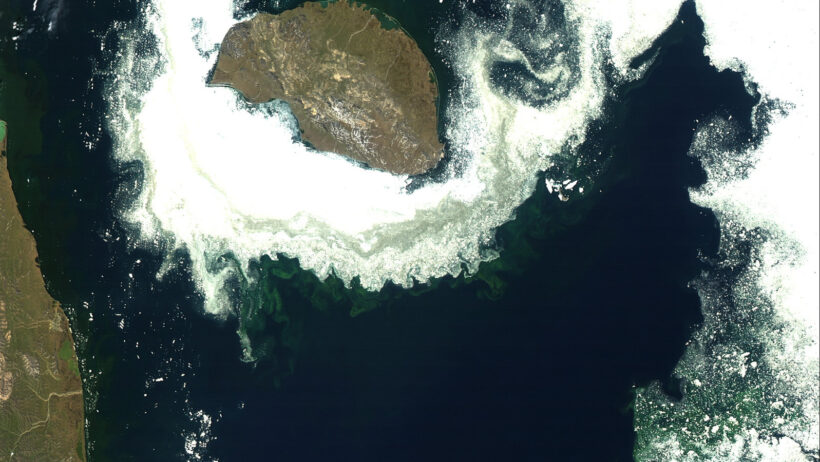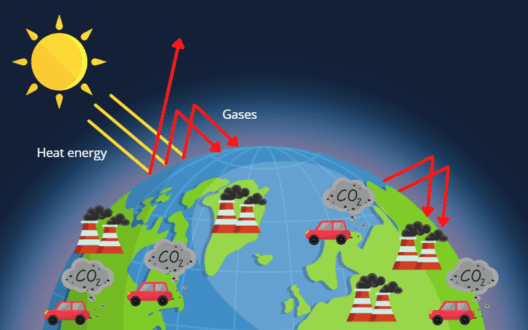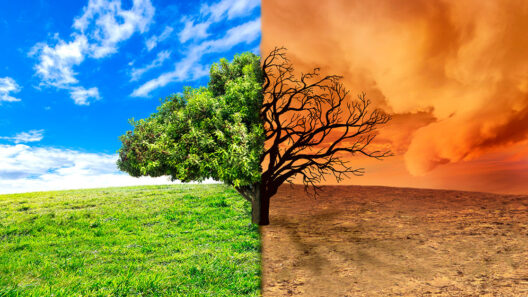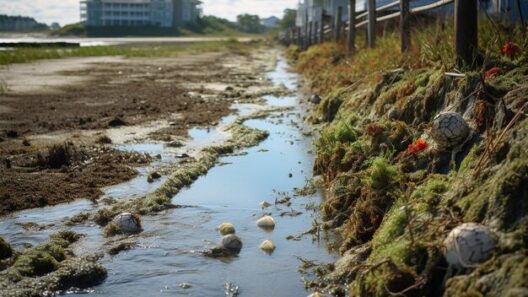The intricate tapestry of Earth’s ecological systems is woven from an array of cycles—atmospheric, hydrological, and geochemical. While these cycles have maintained a delicate balance for eons, the inexorable rise of global temperatures is exerting unprecedented pressure on this equilibrium. The invisible specter of climate change, driven predominantly by anthropogenic factors, is transforming our planet in ways that resonate through every living organism.
The phenomenon of global warming is not merely a singular event but rather a catalyst for a cascade of environmental shifts. The Earth’s average temperature has increased significantly, primarily due to the accumulation of greenhouse gases like carbon dioxide and methane in the atmosphere. This warming has been linked to intensified weather patterns, disrupted ecosystems, and altered biological cycles. However, the implications extend far beyond immediate environmental changes. They penetrate the very core of life on Earth, influencing everything from migratory patterns to reproductive cycles of various species.
One of the most profound consequences of rising temperatures is the alteration of seasonal cycles, known as phenology. Phenology refers to the study of the timing of biological events, such as flowering, fruiting, and migration. With warming temperatures, many plant species are flowering earlier in the spring. This shift may seem benign but creates a mismatch in the timing with other species. Pollinators, for instance, may not synchronize their emergence with the flowering of plants, potentially jeopardizing entire food webs. Such disruptions underscore the interconnectedness of ecosystem components, where a single change can propagate through the chain of life.
Furthermore, climate change affects terrestrial and aquatic ecosystems in complex ways. Oceans, which absorb about a quarter of carbon emissions, are witnessing increased acidification. This phenomenon adversely impacts marine life, particularly organisms with calcium carbonate structures, such as corals and shellfish. Coral reefs, often dubbed the rainforests of the sea, provide not only habitat for myriad marine species but also contribute to coastal protection. As ocean temperatures rise and acidity increases, reefs face bleaching and mortality, disrupting marine biodiversity and altering fisheries that are critical to human livelihoods.
The hydrological cycle is another vital system undergoing perilous change. Warmer temperatures increase evaporation rates, leading to altered precipitation patterns. These shifts can manifest as intensified droughts in some regions while unleashing torrential rains in others. Communities that rely on predictable rainfall for agriculture are particularly vulnerable. Crop viability diminishes when planting and harvesting seasons no longer align with climatic conditions. The ability to adapt to these fluctuations is hampered by socio-economic factors, threatening food security for millions worldwide.
Moreover, the melting of polar ice caps and glaciers represents a tangible consequence of global warming that reverberates far beyond geographic boundaries. As ice retreats, sea levels rise, endangering coastal communities. This phenomenon is not just an environmental concern; it poses a direct threat to human habitation, infrastructure, and economic stability. Low-lying areas are at risk of becoming uninhabitable, leading to potential displacement of populations, commonly referred to as climate refugees. Historical precedents illustrate that migrations can precipitate geopolitical tensions, amplifying existing societal challenges.
In regions where permafrost exists, particularly the Arctic, thawing poses another alarming challenge. As frozen organic matter decomposes, it releases stored carbon into the atmosphere, further exacerbating the greenhouse effect. This vicious cycle threatens to unleash additional climate feedback loops. The consequences of these releases extend beyond local ecosystems, influencing global climate patterns, accelerating warming, and potentially leading to runaway climate change scenarios.
In discussing the myriad ways global warming alters Earth’s cycles, it becomes clear that the ramifications are not merely environmental—they are socio-economic and existential in nature. Energy systems, agricultural practices, and urban planning all require a reevaluation in the face of changing planetary dynamics. The innovation of renewable energy technologies, sustainable agricultural practices, and climate-resilient urban designs can act as a countermeasure against such sweeping changes. These actions prioritize the health of both the planet and its inhabitants, ensuring that future generations inherit a world capable of sustaining diverse life.
Education and public awareness serve as pivotal components in addressing the invisible threat posed by climate change. Understanding the interconnectedness of Earth’s systems raises awareness of individual and collective responsibilities. From reducing carbon footprints to advocating for policy change, public engagement is essential in combatting global warming. By fostering a culture of sustainability, society can harness the collective power of informed citizens working towards a singular goal: a planet in equilibrium.
Although the challenges presented by global warming are daunting, the path forward remains illuminated by innovation and resilience. The key lies in recognizing the interconnectedness of our actions and their consequences. Addressing the invisible threat of climate change requires a multifaceted approach, uniting science, policy, and community action. A shift in perspective is critical—one that moves from viewing climate change as a distant threat to recognizing it as an immediate and pressing issue that demands our attention and action today.
In conclusion, the invisible threat of global warming necessitates a comprehensive understanding of how it alters Earth’s natural cycles. The implications are storied and far-reaching, cascading through ecosystems and impacting human life. Engagement, adaptability, and innovation stand as our greatest allies in addressing this existential crisis. The clock is ticking, and as stewards of the Earth, the responsibility to mitigate these changes rests firmly in our hands.








